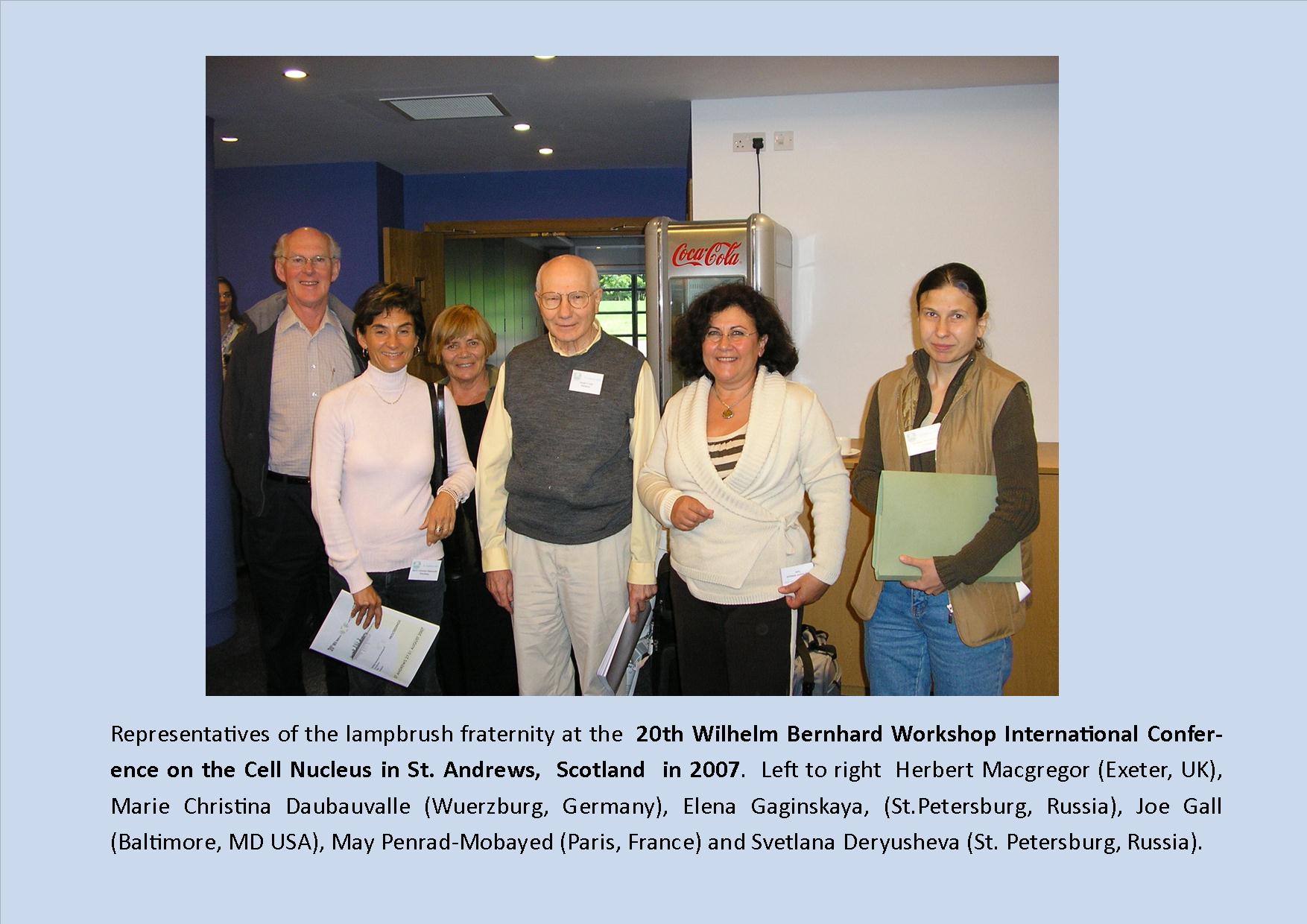
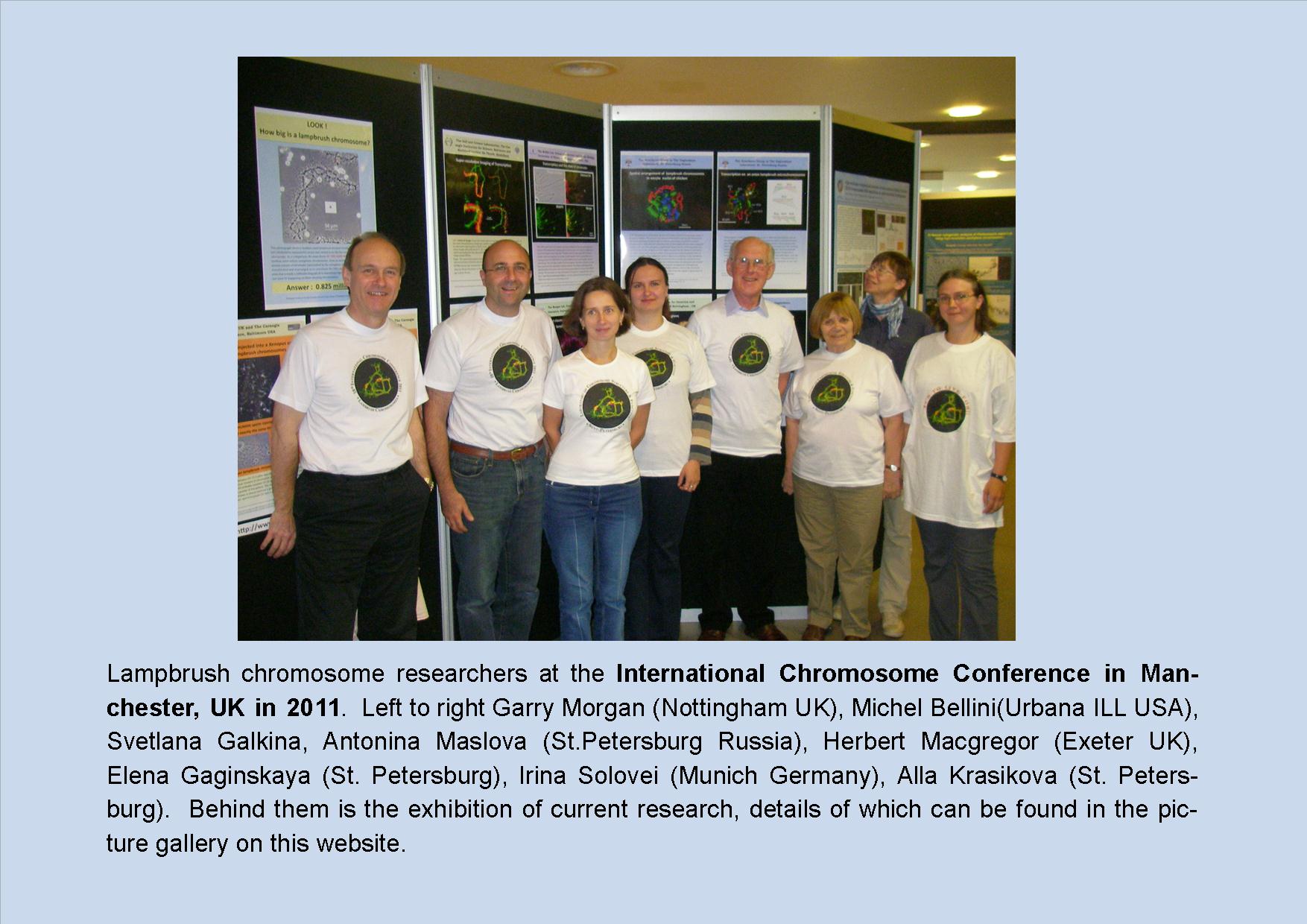
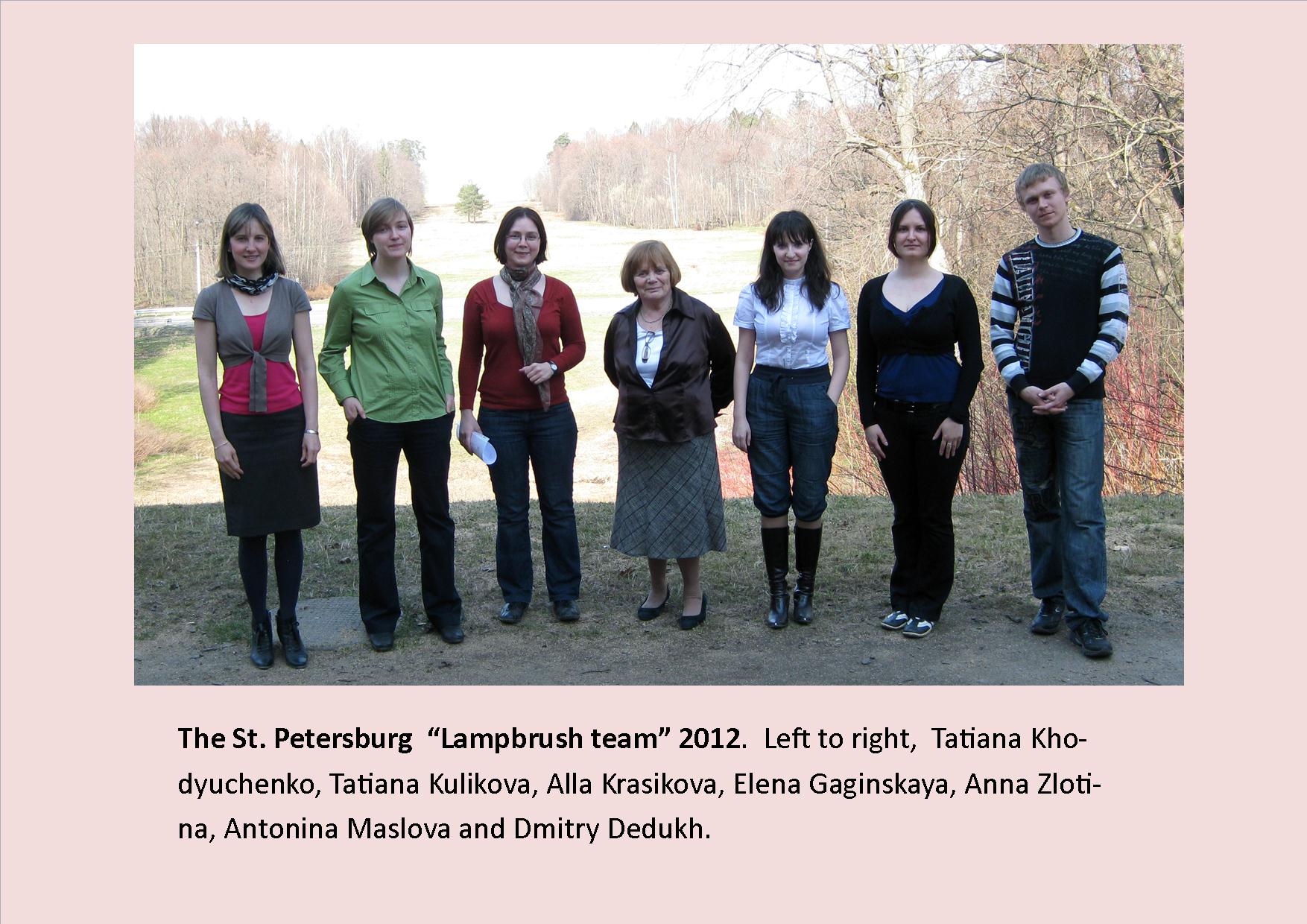
Numbers in blue link to corresponding pdf.



|
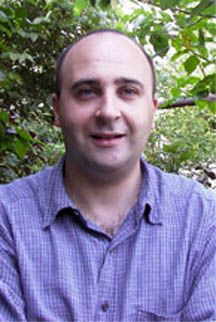
|
Michel Bellini Graduated from: Pierre et Marie Curie University, 1993. Current Position: Assistant Professor. University of Illinois at Urbana-Champaign, School of Molecular and Cellular Biology. Interests: Organization of the nucleus; Chromosomes and other nuclear organelles; RNA transcription and processing; Ribonucleoproteins; Nucleo-cytoplasmic trafficking Current Address: Dr. Michael Bellini, University of Illinois at Urbana-Champaign, School of Molecular and Cellular Biology, Department of Cell and Structural Biology, Room C522 Chemical and Life Science Laboratory, 505 South Goodwin, Urbana, Illinois 61801 USA. Tel. : (217) 265-529; Fax: (217) 244 1648; E-mail: bellini@life.uiuc.edu
Selected publications:
Bellini M (2000) |
|
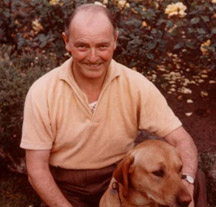
|
Professor H G Callan FRS, well known to all his many friends and colleagues throughout his life as Mick, was the co-founder, together with Joe Gall, of modern lampbrushology. His greatest single contribution to the field was an exhaustive and far-reaching study of the LBCs of newts of the genus Triturus, published jointly with his assistant Mrs. Lydia Lloyd, in 1960 (Callan & Lloyd, 1960). The results of his many later researches, alongside those of all others in the field were brought together in his book on lampbrush chromosomes published by Springer in 1986 (Callan, 1986). Mick died in 1993 at the age of 76. The accompanying photograph of him on this page was taken by Jim Kezer in 1965 at the height of Mick's scientific career when he was 49 and had just developed the highly stimulating and controversial Master/Slave theory of molecular genetics. An obituary can be found in Chromosome Research, 1994, 2, 83-86 |
|
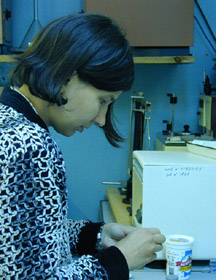
|
Svetlana Derjusheva Graduated from: Saint-Petersburg University, Department of Genetics (1990) Current position: Researcher in the Lab. of Chromosome Structure & Function, Biological Institute, St. Petersburg University PhD project: Cytogenetics of horses (1998) Active research in lampbrushology: since 1999 Skills: lampbrush chromosomes, mitotic chromosomes, chromosome banding, cell culture, FISH, PRINS, DNA labeling, DNA cloning, recombinant DNA, processing and analysis of microscopic images Current address: Biological Institute of St. Petersburg University, Oranienbaumskoye rd., 2, Stary Peterhof, St.Petersburg 198904, Russia Tel. : (+7-812) 4507311; Fax: (+7-812) 4507310; E-mail: svederjusheva@hotmail.com Selected publications: Derjusheva et al. (2003), (2007) |
|
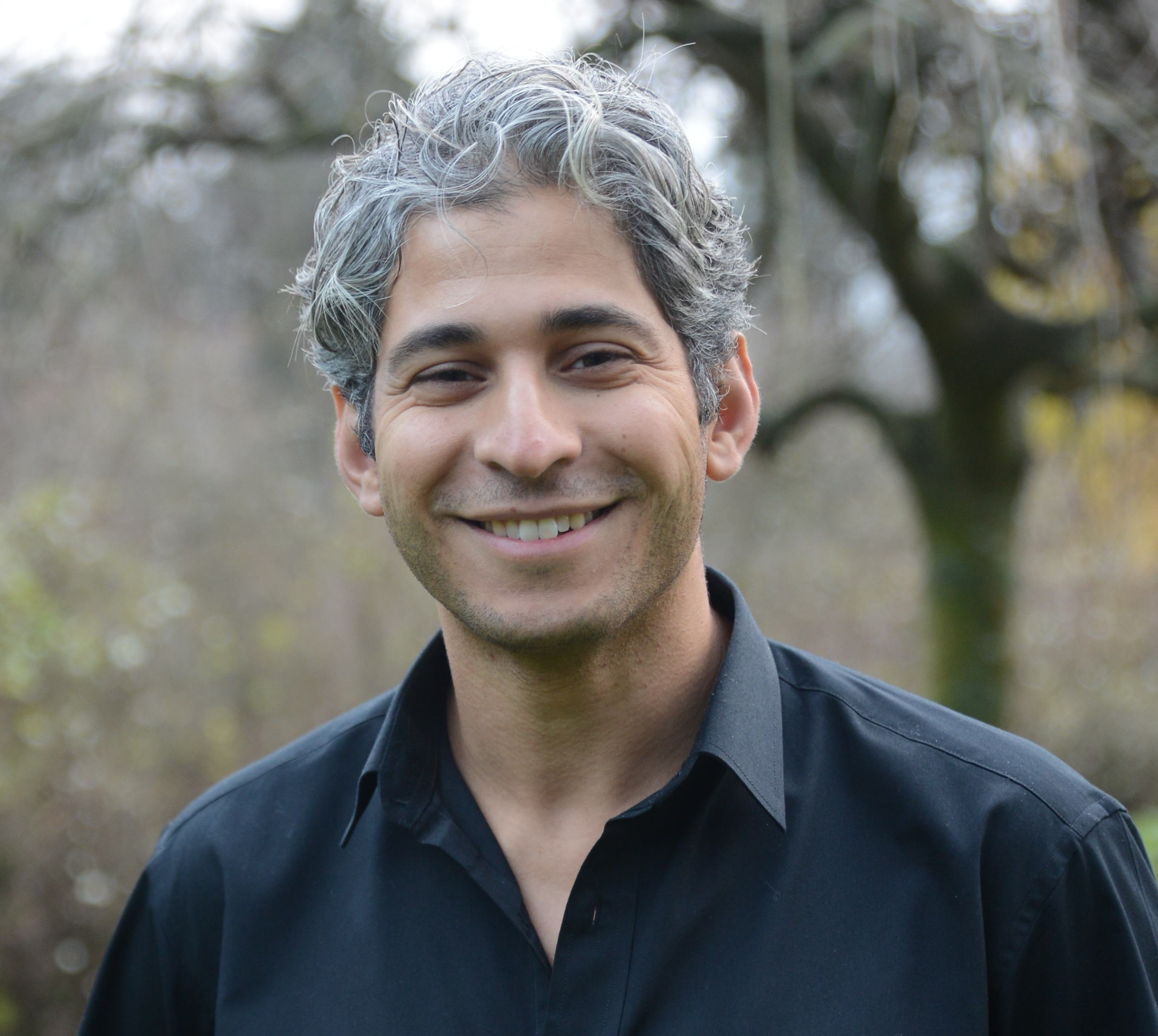
|
Ahmed Elewa Education:
Ph.D. project: "POS-1 Regulation of Endo-mesoderm Identity in Caenorhabditis elegans". Thesis Advisor: Craig Mello, Ph.D. Current position: Postdoctoral Researcher (NIH Ruth Kirschstein Fellow) - Group of Andras Simon, Department of Cell and Molecular Biology, Karolinska Institute, Sweden. Field of scientific interest: Spatial and temporal regulation of salamander limb regeneration and in situ sequencing of salamander lampbrush chromosomes. Current address: von Eulers vag 3, Department of Cell and Molecular Biology, Karolinska Institute, Stockholm, Sweden 17177. Tel.: +46 70 024 3225; E-mail: ahmed.elewa@ki.se Selected publications:
|
|
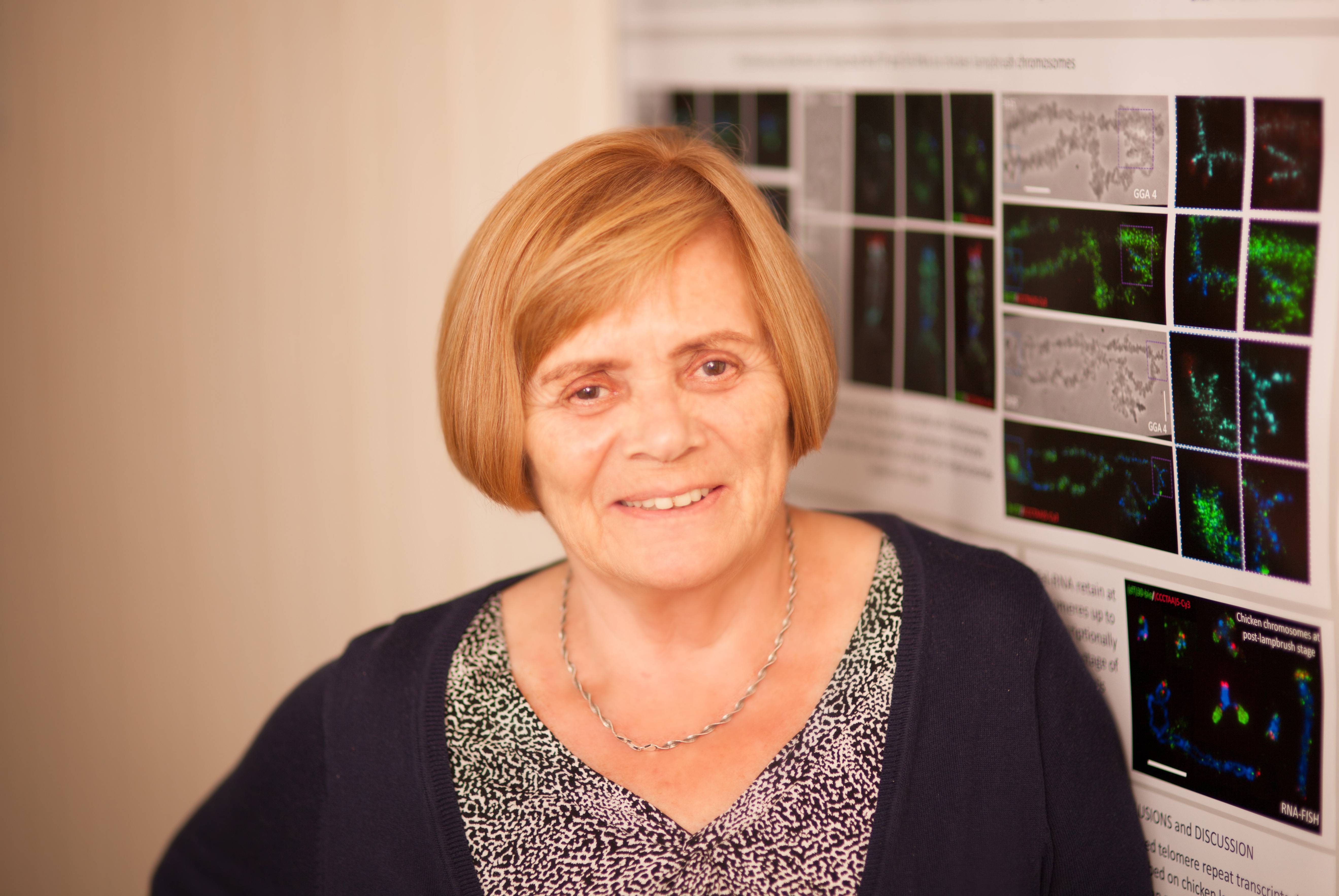
|
Professor Elena Gaginskaya, Ph.D., D.Sc., FSB. Graduated from: Saint-Petersburg University, Department of Vertebrate Zoology (1955) Current position: Professor of the Department of Cytology & Histology, Saint-Petersburg State University PhD project: Cytological aspects of avian oogenesis (1972) D.Sc. project: Functional morphology of avian chromosomes during oogenesis (1989) Active research in lampbrushology: since 1982 Field of scientific interest: avian oogenesis, avian genome organization, lampbrush chromosome structure and functions, intranuclear bodies, centromere protein bodies, karyosphere formation, transcription on lampbrush chromosomes, biological significance of lampbrush chromosomes Current address: Biological Institute of St. Petersburg University, Oranienbaumskoye rd., 2, Stary Peterhof, St.Petersburg 198904, Russia Tel. : +7 921 3042981; Fax: (+7-812) 4507310; E-mail: elena.gaginskaya@gmail.com Selected Publications:
Khodyuchenko et al. (2012) |
|
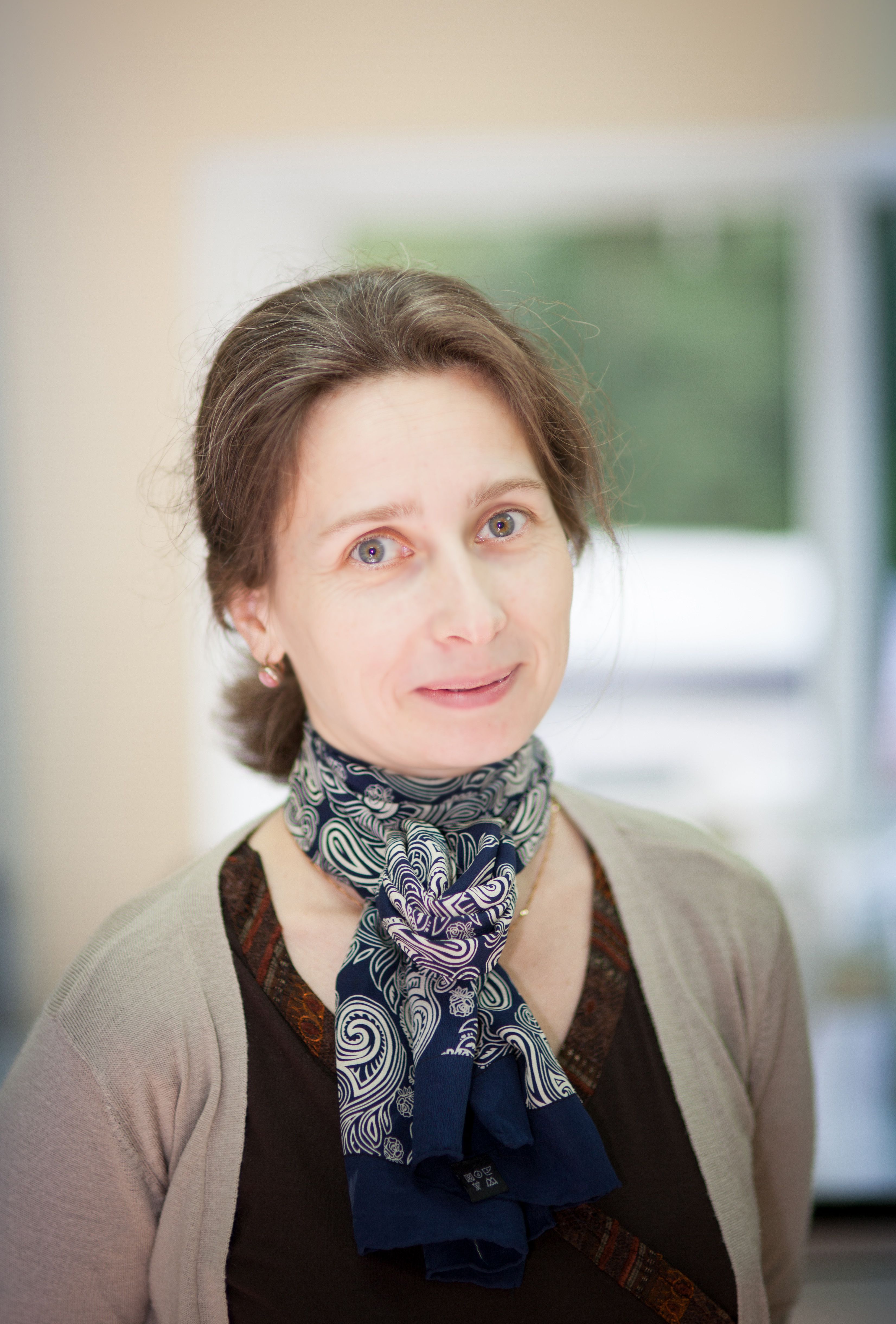
|
Svetlana Galkina, Ph.D. Graduated from: the University of Saint-Petersburg, Dept of Cytology & Histology (1998) Current position: Associate Professor, Department of Cytology & Histology, Saint-Petersburg State University Master project: The chicken chromosome physical and genetics maps: comparative analysis of mitotic chromosomes and lampbrush chromosomes using FISH (1998) PhD project: Comparative research of mitotic and lampbrush chromosomes using banding and FISH techniques (2002) Active research in lampbrushology: since 1993 Skills: lampbrush chromosome manipulation, general and molecular cytogenetics methods, recombinant DNA and molecular cloning technique, FISH, PCR, pulse-electrophoresis Field of scientific interest: Lampbrushology, molecular cytogenetics of bird, high precision gene mapping, chromosome rearrangements, karyotype evolution Current address: 7/g Universitetskaya emb., St.Petersburg 199034, Russia Tel. : (+7-812) 4507311; Fax: (+7-812) 4507310; E-mail: svetlana.galkina@mail.ru Selected publications: Galkina et al. (2005), (2006) |
|
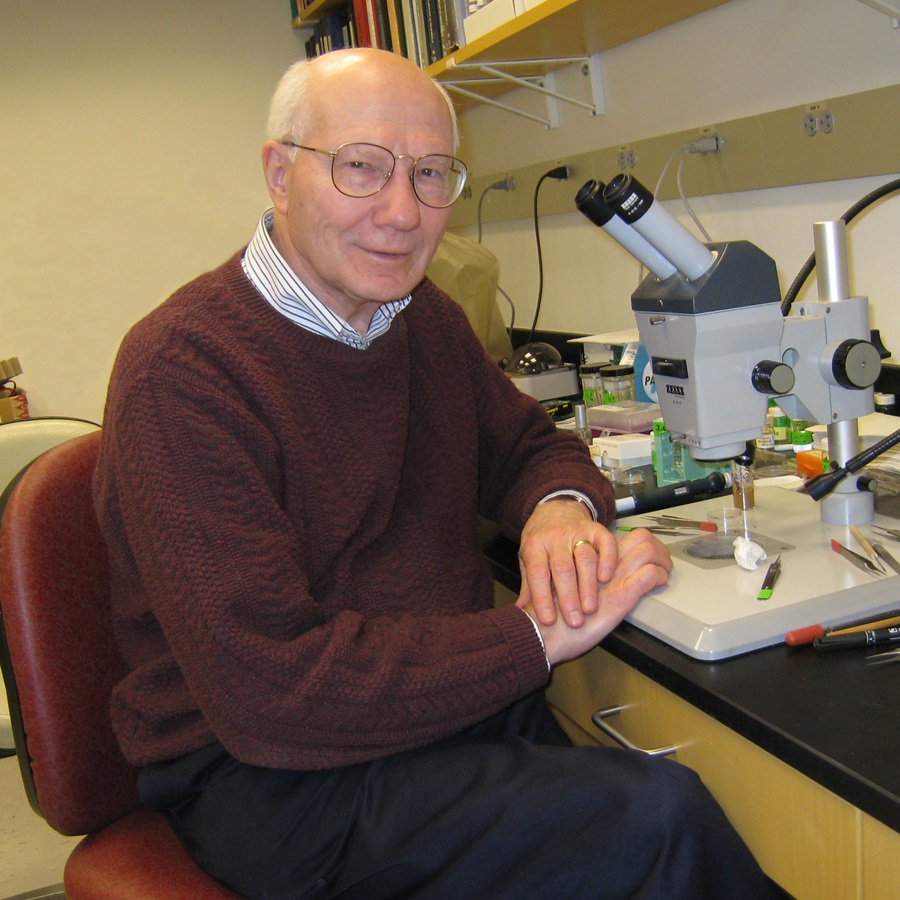
|
Professor Joseph G Gall is a cell biologist whose work has centred on the organization and expression of genes on chromosomes. As a graduate student in the early 1950s, he examined the LBCs of the American newt Notophthalmus. He soon began to correspond with Mick Callan in Scotland, who was also studying these poorly understood structures in the European newt Triturus. Thus arose a 40-year collaboration and personal friendship that lasted until Callan's untimely death in 1993. Gall's major interests in the amphibian germinal vesicle and LBCs can be summarised under the following headings: The most recent and current studies in the Gall laboratory are reported on the News page of this website. Joe is the American Cancer Society Professor of Developmental Genetics in the Department of Embryology of the Carnegie Institution for Science. Current address: Joseph G. Gall, Carnegie Institution for Science, 3520 San Martin Drive, Baltimore, MD 21218 Tel. : 410-246-3017; Fax: 410-243-6311; E-mail: gall@ciwemb.edu Selected publications: Talhouarne and Gall (2014) |
|
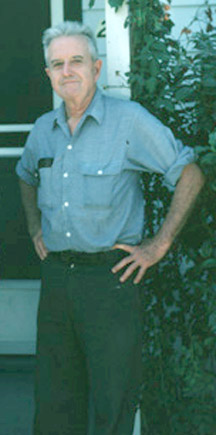
|
Professor James Kezer Jim Kezer died at his home in Eugene Oregon on January 3rd 2002, aged 94. His obituary can be found in Chromosome Research volume 10, issue 2, page 175. Jim Kezer was Professor of Biology at the University of Oregon in Eugene, Oregon, USA until he retired in 1974. He was born in 1908. Jim introduced plethodontid salamanders to lampbrushologists when he visited Joe Gall's lab at the University of Minnesota in 1962. Thereafter he worked with Mick Callan (St.Andrews), Pedro Leon (Costa Rica), Herbert Macgregor (St.Andrews and Leicester), Stan Sessions (Hartwick College, N.Y.) and others in a series of investigations on a number of unique and truly remarkable features of the oocyte nuclei and lampbrush chromosomes of a range of amphibian species. His discovery of the multinucleate oocytes of the Pacific tailed frog, Ascaphus truei (Macgregor and Kezer 1970), his studies of the lampbrush nucleolar organizer and nucleolar rings in Plethodon (Kezer and Macgregor 1973), as well as the early discovery and characterization of a centromeric satellite DNA in Plethodon [Macgregor, H.C. and J. Kezer. The chromosomal localisation of a heavy satellite DNA in the testis of Plethodon c. cinereus . Chromosoma (1973) 33: 167-182] are especially noteworthy. Jim was also the initiating force behind one of the first ever studies to show the usefulness and significance of DNA in molecular phylogenetic studies. Without his help, advice and knowledge, Mizuno and Macgregor could not have accessed the many species of Plethodon that feature in this study [Mizuno, S. and H.C. Macgregor . Chromosomes, and sequences and evolution in salamanders of the genus Plethodon. Chromosoma (1974) 48: 239-296]. Special mention must also be made of his wide ranging cytogenetic studies of plethodontids and especially of his discovery of some spectacular examples of sex chromosome heteromorphism in Central American species [see, for example, Kezer, Sessions and Leon (1989)The meiotic structure and behaviour of the strongly heteromorphic X/Y sex chromosomes of neotropical plethodontid salamanders of the genus Oedipina. Chromosoma 98: 433 442]. To a great many biologists who graduated from the University of Oregon in the 1960s and 1970s some of whom are now front line chromosome scientists - Jim Kezer is known and fondly remembered for his outstanding teaching skills which were largely founded on his tremendous enthusiasm for his subject and the sense of fun that he imparted to his students. The accompanying photograph was taken in 1981 by Garry Morgan during a visit to Jim Kezer's home in Eugene. |
|
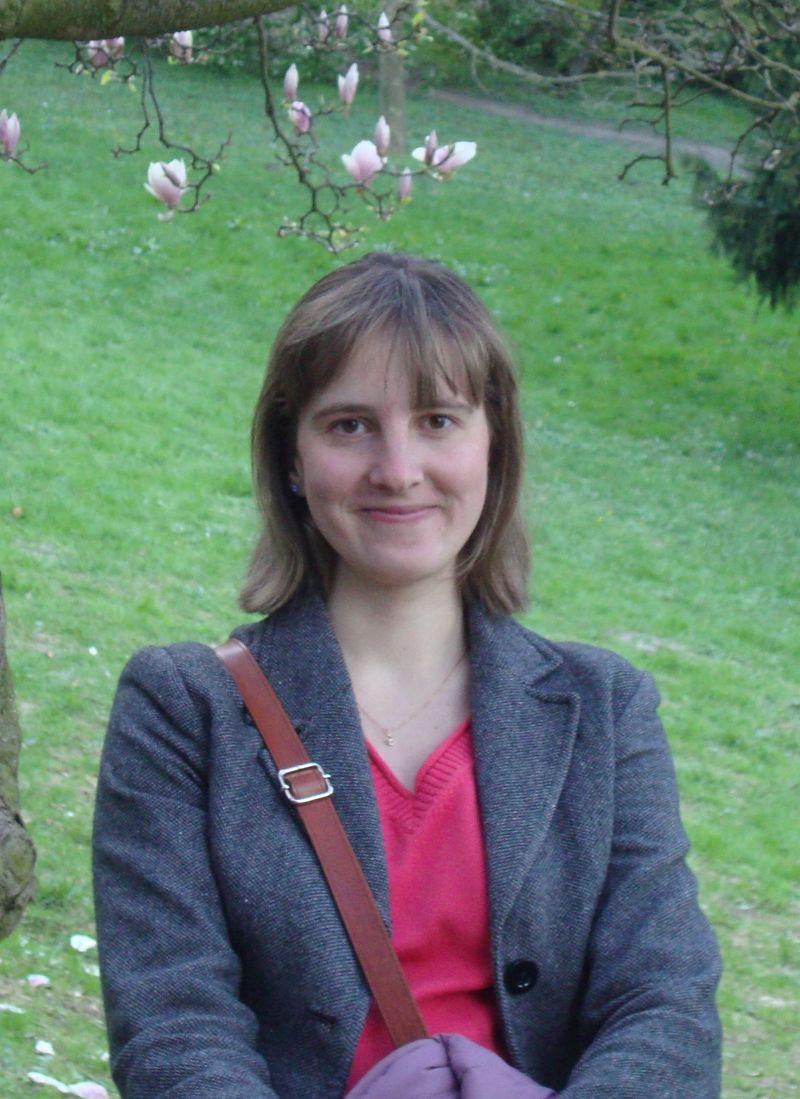
|
Tatiana Khodyuchenko Graduated from: the University of Saint-Petersburg, Dept of Cytology & Histology (2009) Current Position: Postdoc, Department of Cytology and Histology, Saint-Petersburg State University (since 2013) PhD project: Molecular composition and dynamics of coilin-positive bodies in pigeon Columba livia oocyte nucleus Active research in lampbrushology: since 2007 Skills: lampbrush chromosome isolation, working with animal oocytes, oocyte nuclei manipulations, oocyte microinjections, immunofluorescent staining of chromosomes and cells, FISH on chromosomes, fluorescent microscopy, confocal laser scanning microscopy, PCR, DNA and protein electrophoresis, western-blotting Field of scientific interest: organization and composition of oocytes in amphibia and birds, compartments of the cell, architecture of avian oocyte, avian oogenesis Current address: Laboratory of the cell nucleus structure and dynamics, Department of Biology, Saint-Petersburg State University, St. Petersburg, 14th Line of Vasilyevsky Island, 29, liter A, 199178, Russia Tel. : +7(812) 328-96-87; Website: http://cell-nucleus-lab.bio.spbu.ru/index.html E-mail: tatianakhod@gmail.com Selected publications: |
|
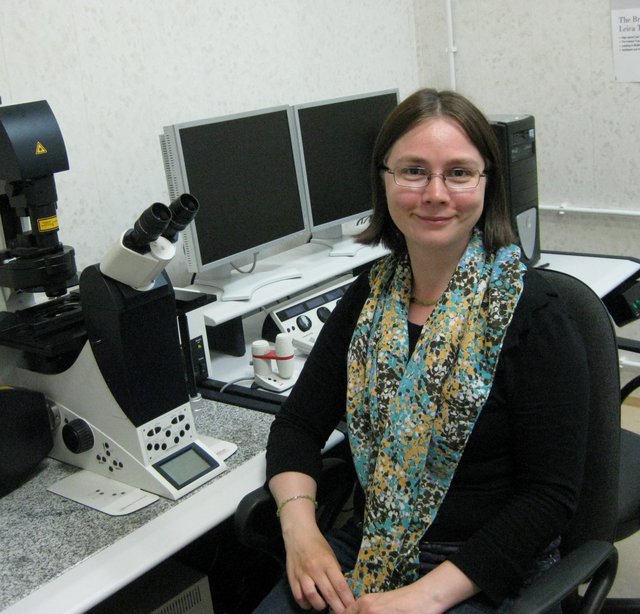
|
Graduated from: Saint-Petersburg State Polytechnical University, The Faculty of Physics and Mechanics, Department of Biophysics, 2003 Current Position: Senior Researcher, Associate Professor. Saint-Petersburg State University, Department of Cytology and Histology PhD project: Morphological and functional investigation of nuclear structures associated with centromeric regions of avian lampbrush chromosomes. St. Petersburg State University, 2007 Field of scientific interest: functional compartments of the cell nucleus, genome architecture, regulation of transcription, functions of non-coding RNAs, organization of centromere regions of chromosomes, avian and amphibian lampbrush chromosomes, centromere-associated protein bodies, karyosphere formation Current address: Laboratory of the cell nucleus structure and dynamics, Department of Biology, Saint-Petersburg State University, St. Petersburg, 14th Line of Vasilyevsky Island, 29, liter A, 199178, Russia Tel. : +7(812) 328-96-87; Website: http://cell-nucleus-lab.bio.spbu.ru/index.html E-mail: alla.krasikova@gmail.com Selected publications: Gaginskaya E, Kulikova T, Krasikova A (2009) (14) |
|
Tatiana Kulikova Graduated from Saint-Petersburg University, Department of Cytology and Histology (2004). Current position: research fellow in the Laboratory of Chromosome Structure & Function, Department of Cytology and Histology, Saint-Petersburg State University. Master project: Structures associated with telomere and centromere regions of avian lampbrush chromosomes. PhD project: Nuclear domains involved in nuclear retention of poly(A)+ RNA in growing oocytes of birds and frogs. Active research in lampbrushology: since 2002. The field of scientific interests: nuclear compartmentalization and genome expression in oogenesis, lampbrush chromosomes, non-coding RNA, epigenetics. Current address: Laboratory of the cell nucleus structure and dynamics, Department of Biology, Saint-Petersburg State University, St. Petersburg, 14th Line of Vasilyevsky Island, 29, liter A, 199178, Russia Tel. : +7(812) 328-96-87; Website: http://cell-nucleus-lab.bio.spbu.ru/index.html E-mail: t.v.kulikova@gmail.com Publications:
Derjusheva et al. (2007) (21) |
|
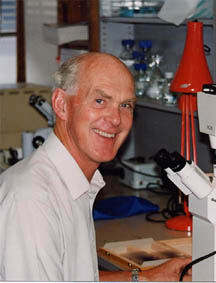
|
Herbert Macgregor was originally a student of H.G.Callan's at the University of St.Andrews in Scotland. In 1970 he became the Professor of Zoology and Head of the Department of Zoology at the University of Leicester, England. He retired from his post at Leicester in 1996 and is now a Professor Emeritus of Zoology at Leicester and a Visiting Professor at the School of Biosciences of the University of Exeter, England. His research has centred on the organization and expression of gene sequences in chromosomes, with a special emphasis on the genomes of amphibians and birds and extensive exploitation of the superb opportunities offered by these groups for studies on lampbrush chromosomes. Herbert Macgregor is the former and founding editor of the journal Chromosome Research and author of two books (Macgregor & Varley 1988, Macgregor 1993). Current address: Professor H.C.Macgregor, School of Biosciences, University of Exeter, Exeter EX4 4PS, United Kingdom Email: herbert.macgregor@exeter.ac.uk Selected publications: Macgregor (1993), (2012a), (2012b) |
|
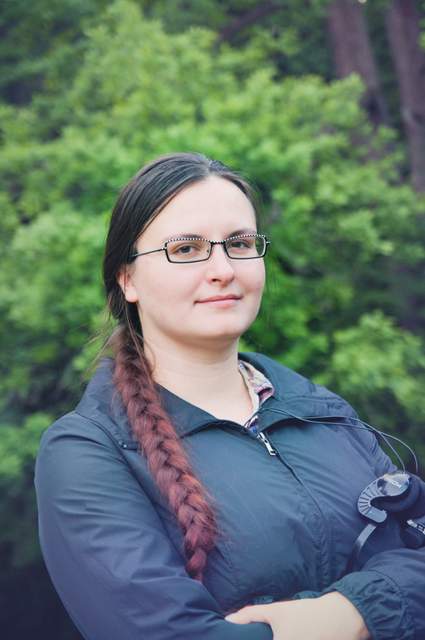
|
Antonina Maslova Graduated from: Ivanovo State University, Department of Physiology (2008) Current Position: Postdoc, Department of Cytology and Histology, Saint-Petersburg State University (since 2013) PhD project: Spatial genome organization in giant nuclei of avian and amphibian oocytes and significance of nuclear actin in its maintenance. Active research in lampbrushology: since 2008 Field of scientific interest: 3D architecture of avian oocyte nucleus, karyospere formation, spatial genome organization in somatic cell nuclei, nuclear actin, avian satellite repeats, image processing Current address: Laboratory of the cell nucleus structure and dynamics, Department of Biology, Saint-Petersburg State University, St. Petersburg, 14th Line of Vasilyevsky Island, 29, liter A, 199178, Russia Tel. : +7(812) 328-96-87; Website: http://cell-nucleus-lab.bio.spbu.ru/index.html E-mail: maslova_a.v@mail.ru Publications: |
|
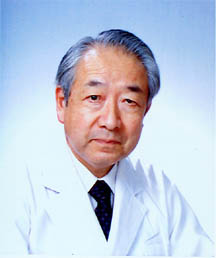
|
Professor Shigeki Mizuno Professor Shigeki Mizuno died on January 11th 2005.. He was a scientist of outstanding skill and intellect who latterly played a leading role in the chicken genome mapping project. A close friend and colleague recently described him as a man of calm, kindness and wisdom. He will be fondly remembered by all who knew and worked with him over the years. His obituary was published in Chromosome Research volume 13, pages 111 - 112 (2005). _____________________________ Graduated from: the University of Tokyo, Faculty of Agriculture, Department of Agricultural Chemistry (1959)
Interest in chicken LBCs: localization of specific repetitive DNA family into a specific chromomere; fine mapping of active genes or specific DNA sequences on loops, chromomeres of lampbrush W chromosome by FISH; transcription of specific genes on particular pairs of loops; DNA sequence and structural features of W-Z pairing region, identification of a centromeric region on the lampbrush W chromosome. Selected publications: Hori et al. (1996)
|
|
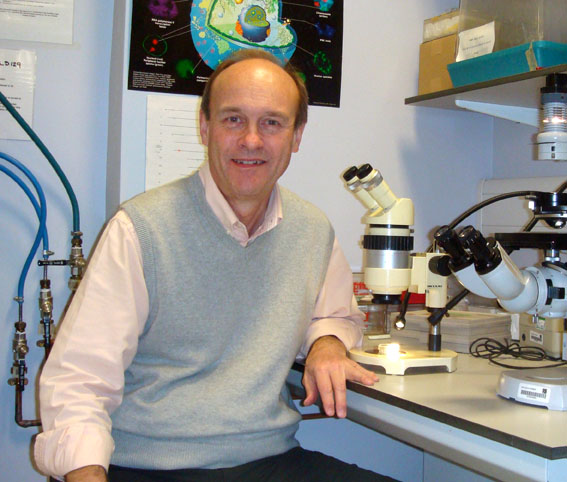
|
Graduated from: University of Leicester, School of Biological Sciences (1975) PhD project: Studies of the organization and function of meiotic chromosomes in urodeles (University of Leicester 1978) Current position: Lecturer, Institute of Genetics, University of Nottingham, Queens Medical Centre, Nottingham NG7 2UH, UK Active research in lampbrushology: 1975-1980; 1997 to present. Field of scientific interest: Nuclear organization and its relationship to nuclear gene expression. Transcription elongation and termination. Molecular characterization of transcription and RNA processing complexes in lampbrush loops and associated nuclear bodies. Tel. : +44 (0)115 823 0390; Fax: +44 (0)115 823 0338; E-mail: garry.morgan@nottingham.ac.uk Selected publications: Morgan 2018, (2002), (2007)
|
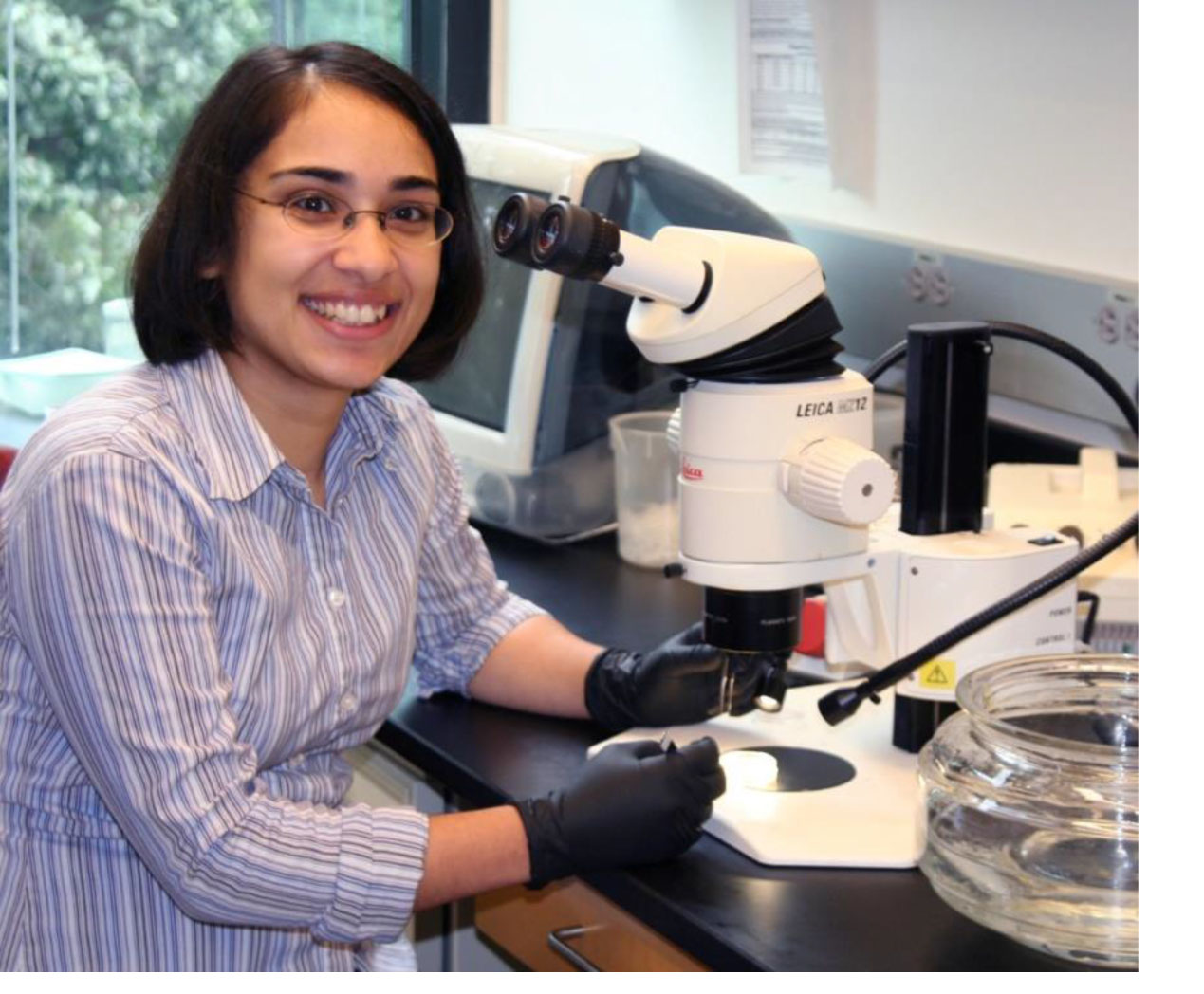
|
Zehra F. Nizami Education: B.A. from the Department of Molecular Biology, Princeton University, 2003. Ph.D. from the Department of Biology, Johns Hopkins University, 2012. Thesis work carried out in Joe Gall's laboratory at the Department of Embryology, Carnegie Institution for Science, Baltimore MD. Ph.D. project: Structure and Function of Cajal bodies and histone locus bodies in Drosophila and Xenopus nuclei. Current position: Postdoctoral fellow in Joe Gall's laboratory at the Department of Embryology, Carnegie Institution for Science. Field of scientific interest: Structure and function of amphibian LBCs, particularly in Xenopus, Notophthalmus, and Ambystoma. Organization of nuclear organelles, including "pearls" found at polymerase III loci of Xenopus LBCs. Currently analyzing nascent transcripts from the oocyte of Xenopus by RNAseq (Sept. 2014). Current address: Department of Embryology, Carnegie Institution for Science, 3520 San Martin Drive, Baltimore, MD 21218. Tel.: 410-246-3027; Fax: 410-243-6311; E-mail: nizami@ciwemb.edu Selected publications: Gardner et al. (2012)
|
|
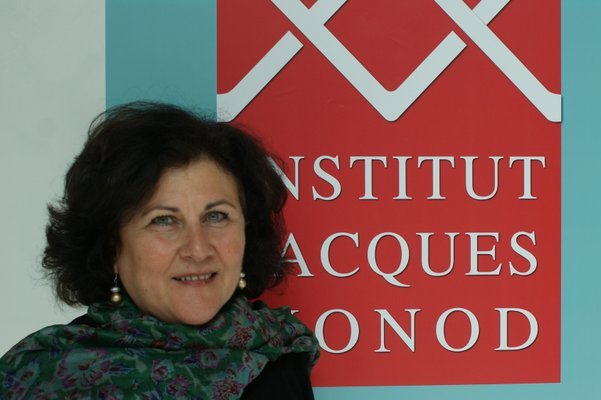
|
May Penrad-Mobayed Graduated from: Pierre et Marie Curie University : Doctorat de 3ème cycle. Embryology (1981); Doctorat d’Etat ès Sciences Naturelles (1995) Current position: Permanent senior staff scientist. National Centre for Scientific Research (CNRS) Active research in lampbrushology: since 1983 Field of scientific interest: amphibian lampbrush chromosomes and those of Pleurodeles waltl and Xenopus tropicalis in particular. Sex chromosomes and sex determination. RNA transcription and processing. Molecular characterization of nuclear structures. hnRNPs and hnRNP G/RBMX in particular. Role of Sox9 and Foxl2 in the amphibian oocyte (in progress). Current address: Institut Jacques Monod, CNRS & Université Paris Diderot, Department « Molecular and Cellular Pathology, Bât.Buffon – 5th floor, 15 rue Hélène Brion, 75205 PARIS CEDEX 13 - FRANCE Tel. : +33(0)1 57 27 81 17/18; Fax: +33(0)1 57 27 80 87; E-mail: penrad@ijm.univ-paris-diderot.fr Selected publications: Angelier et al. (1990), (1991), (1996) |
|
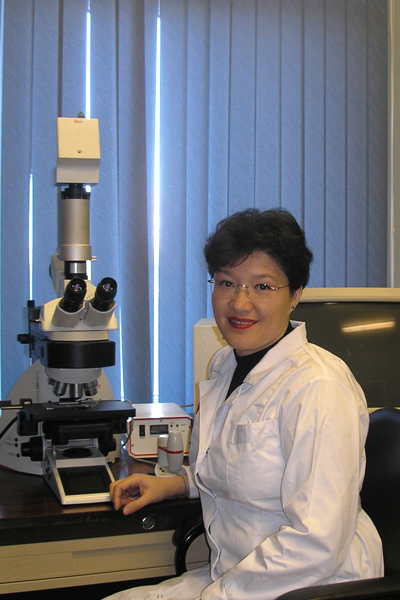
|
Alsu Saifitdinova, Ph.D. Graduated from: the University of St. Petersburg, Dept of Embryology (1994) Current position: Director of "Chromas" Research Resource Center, Saint-Petersburg State University Master project: Analysis of nuclear protooncogenes c-fos and c-jun expression in mouse embryogenesis (1994) PhD project: Highly repeated sequence FCP isolated from chaffinch genome: its structure, localization and functional peculiarities in generative and somatic cells (2001) Active research in lambrushology: since 1996 Skills: work with animal and human embryos, histological techniques, RNA isolation, micromanipulation of oocyte nuclei and chromosomes, manual lampbrush chromosome isolation, preparation of mitotic chromosomes, human cytogenetical diagnostic, recombinant DNA manipulation, molecular hybridization, FISH, GISH, PRINS, immunocytochemistry, light microscopy, computer imaging Field of scientific interest: Evolution, genome structure, chromosome organization, nuclear compartmentalization, satellite DNAs, mechanisms of transcription, lampbrush chromosomes Current address: St. Petersburg University, Universitetskaya nab, 7-9, St. Petersburg 199034, Russia Tel. : +7-812-4507311; E-mail: a.saifitdinova@spbu.ru Website: chromas.spbu.ru Selected publications: Dedukh et al. (2013)
|
|
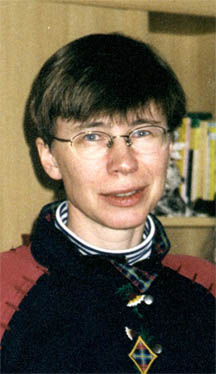
|
Irina Solovei Graduated from: University of St. Petersburg, Faculty of Biology, Department of Cytology and Histology (1981).
Current address: University of Munich (LMU), Biozentrum, Department Biology II, Grosshadernerstr. 2, D-82152 Martinsried Tel. : +49 (0)89 2180 74 223; Fax: +49 (0)89 2180 74 236; E-mail: irina.solovei@mail.lrz-muenchen.de
Selected publications: Hori T, Suzuki Y, Solovei IV, Saitoh Y, Hutchison N, Ikeda E, Macgregor H, Mizuno S (1996) (47)
|
|
Irina Trofimova Graduated from: Bashkir State University, Faculty of Biology (Department of Biotechnology) as Specialist in Biology Current Position: Post-doc of Saint-Petersburg State University, Biology Research Institute, Faculty of Cytology and Histology PhD project: Phenomenon of selective staining of heterochromatin regions of metaphase chromosomes of the person by acridine orange flurochrome. Current address: Laboratory of the cell nucleus structure and dynamics, Department of Biology, Saint-Petersburg State University, St. Petersburg, 14th Line of Vasilyevsky Island, 29, liter A, 199178, Russia Tel. : +7(812) 328-96-87; Website: http://cell-nucleus-lab.bio.spbu.ru/index.html |
|
Zheng'an Wu Graduated from: Graduate School of the Peking (Beijing) University, Department of Biology (1965). PhD from: University of Hiroshima, Faculty of Science and Laboratory for Amphibian Biology (1988). Current position: Visiting Scientist, Department of Embryology, Carnegie Institution, Baltimore, MD (laboratory of J. G. Gall) Interests: Molecular organization of the nucleus; chromosomes and other nuclear organelles; molecular characterization of transcription and RNA processing complexes in lampbrush chromosomes and nuclear bodies. Current mailing address: Carnegie Institution of Washington, Department of Embryology, 3520 San Martin DRive, Baltimore, MD21218, USA Tel. : ++1-410-554-1225; Fax: ++1-410-243-6311; E-mail: zwu@ciwemb.edu Selected publications:
Gall JG et al. (1995), (1999) | |
|
|
Graduated from: Saint-Petersburg State University, Department of Cytology and Histology Current position: Postdoc, Saint-Petersburg State University (since 2013) PhD project: Comparative cytogenetic analysis of karyotypes in Galliform species. Active research in lampbrushology: since 2007 Skills: lampbrush chromosomes, mitotic chromosomes, FISH, PCR, sequencing, immunocytochemistry, processing and analysis of microscopic images. Current address: Laboratory of the cell nucleus structure and dynamics, Department of Biology, Saint-Petersburg State University, St. Petersburg, 14th Line of Vasilyevsky Island, 29, liter A, 199178, Russia Tel. : +7(812) 328-96-87; Website: http://cell-nucleus-lab.bio.spbu.ru/index.html E-mail: anna-zlotina@yandex.ru Selected publications: Daks et al. (2010) (7) |
|
|
|
|
|
|
 Webmaster : Callum Macgregor,
UK
Webmaster : Callum Macgregor,
UK
